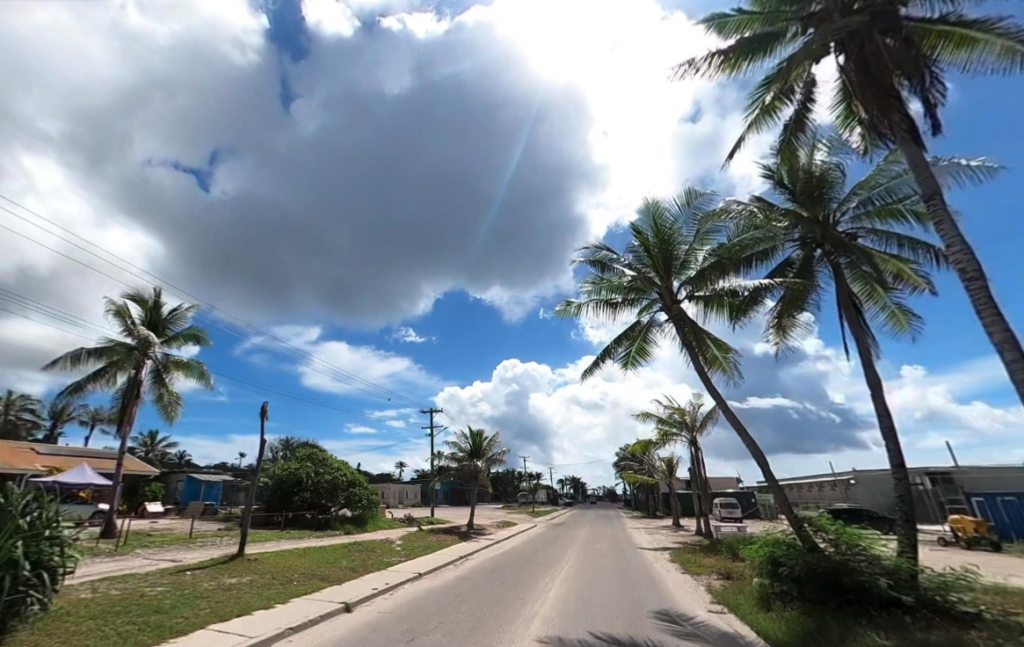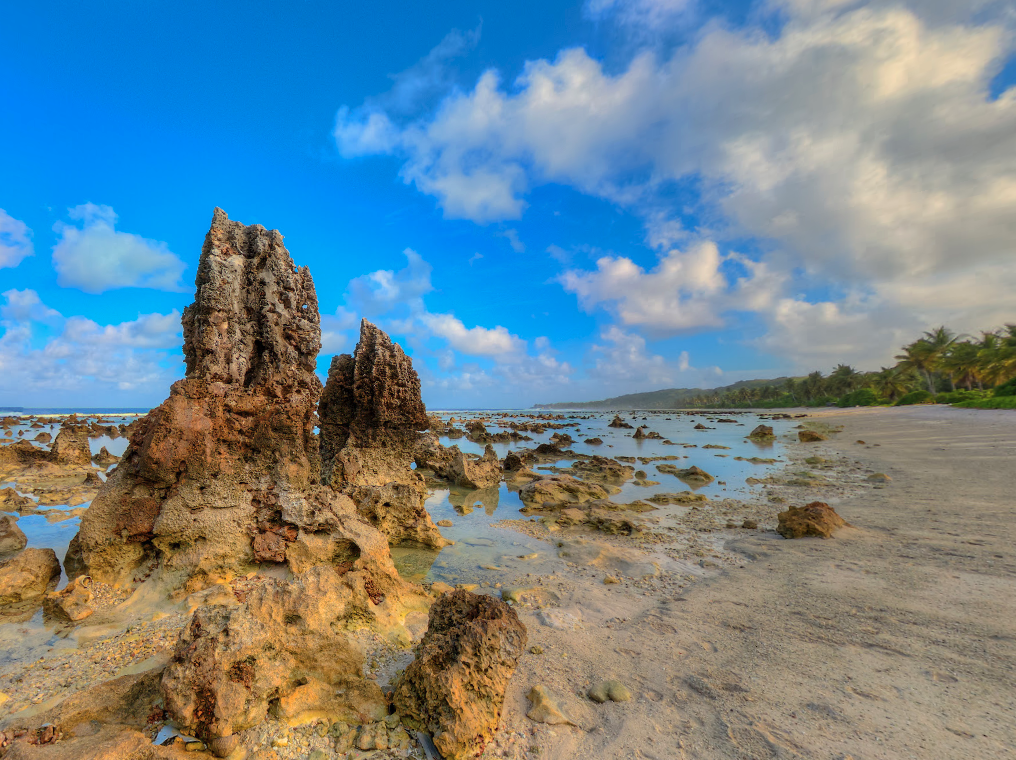Nauru / Republic of Nauru / Repubrikin Naoero – Let’s explore here
What’s it like in Nauru?
Nauru is an island country in the Pacific. At 8 square miles (21 square km), it is the third smallest country in the world, after Vatican State and Monaco. Its population of around 11,000 people is one of the least populous in the world.
Nauru was a phosphate rock island, however the phosphate reserves are now almost entirely depleted. Phosphate mining in the central plateau has left a barren terrain of jagged limestone pinnacles up to 49 ft (15m) high. Mining has stripped and devastated about 80 per cent of Nauru’s land area, leaving it uninhabitable. The only fertile areas on Nauru are on the narrow coastal belt.
The highest point in Nauru is the Command Ridge, at 233 ft ( 71 m) above sea level.

A bit about the history of Nauru
Early History and Settlement
Nauru has a rich history of settlement by Micronesian and Polynesian peoples. It is believed to have been inhabited as early as 1000 BC, although its exact history is not well documented. The islanders developed a distinct culture and language, with their society traditionally organised into clans. Nauru’s economy relied on fishing, gardening and trade with nearby islands.
European Discovery and Colonisation
The first recorded European contact with Nauru was in 1770, when British explorer Captain James Cook arrived. Over the following centuries, European powers began to show interest in the island, primarily for its phosphate deposits. Nauru was officially annexed by Germany in 1888, which began large scale mining of its phosphate resources. After World War I, the island came under Australian, British and New Zealand administration as a League of Nations mandate, and later as a United Nations trust territory after World War II.
Japanese Occupation during World War II
During World War II, Nauru was occupied by Japan from 1942 to 1945. The Japanese exploited the island’s phosphate resources, and many local inhabitants were forced to work in harsh conditions. The Japanese occupation ended when Allied forces took control of the island in 1945, and Nauru became part of the trusteeship of Australia, Britain and New Zealand once more.
Path to Independence
Nauru’s struggle for independence began in the mid 20th century. The island’s phosphate resources made it one of the richest territories in the Pacific, and by the 1960s, Nauruans sought full control over their resources and political affairs. Nauru achieved independence from Australia on January 31, 1968, making it the smallest independent republic in the world. The new nation was highly dependent on phosphate exports, which accounted for the majority of its economy.
Post-Independence Challenges
Following independence, Nauru faced a number of challenges, including the depletion of its phosphate reserves, which had been mined extensively. The island also struggled with issues of mismanagement and corruption. In the 1990s and 2000s, Nauru sought to diversify its economy by opening offshore banking and offering services such as money laundering, but these industries also faced legal and reputational issues.
Recent Developments
In recent years, Nauru has faced significant economic difficulties due to the depletion of its phosphate resources. The country has entered into agreements with Australia to house refugees and asylum seekers in detention centers on the island, generating revenue but also leading to human rights concerns. Nauru continues to rely on aid from Australia and other international partners as it looks for sustainable economic alternatives and strives to address the challenges of climate change, as rising sea levels threaten the low lying island.

Nauru road trip
We haven’t finished our planning for our road trip through Nauru yet. When we do though, we’ll post it here, and in the blog.
Hopefully our journey will improve our knowledge of this intriguing and beautiful country, and enable us to meet some interesting people. We’ll be updating this page at that time – don’t forget to check back 🙂
What’s it like to drive in Nauru?
They drive on the left hand side of the road in Nauru.
There is no public transport.
We’ve also created a dedicated page to driving abroad, which you might find helpful 🙂
What currency do they use in Nauru?
In Nauru they use the Australian dollar. The use of credit / debit cards is not widespread, and you should take cash in more remote areas. Travellers cheques are accepted in tourist areas. There are ATMs in major tourist areas.
You should make yourself aware of the amount that your bank charges you for using credit and debit cards abroad. Often credit cards are cheaper for purchasing items directly, and for withdrawing cash from ATMs.
What language do they speak in Nauru?
They speak English and Nauruan in Nauru, although there are several other recognised languages.
What time zone is Nauru in?
Remember, when you’re planning your next trip to take a look at what time zone it’s in.
Do I need a visa to visit Nauru?
We’ve created a dedicated, more comprehensive page on visas, which you should find helpful. Check it out!
Is wild camping legal in Nauru?
No, wild camping is illegal in Nauru.
What plug / socket type do they use in Nauru?

In Nauru they use plug / socket type I.
Health issues in Nauru
Is it safe to drink water in Nauru?
No, it is not safe to drink tap water in Nauru. Bottled water is readily available throughout the country.
What vaccinations are required for Nauru?
This NHS website is kept up to date with all relevant information on vaccinations in Nauru.
Phones in Nauru
SIM cards may be purchased from Digicel’s main office or selected outlets.
What is the country calling code for Nauru?
The country calling code for Nauru is +674
What are the emergency phone numbers in Nauru?
- The emergency number for police in Nauru is: 110
- In Nauru, the emergency number for ambulance is: 111
- The emergency number for fire in Nauru is: 112
If you’ve got some useful info that you’d like to share, let us know!
And don’t forget to check out all the other pictures!
